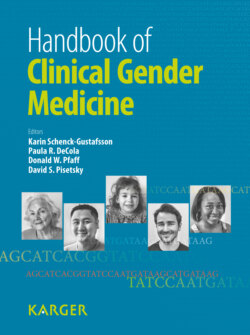Читать книгу Handbook of Clinical Gender Medicine - Группа авторов - Страница 128
Integrated Model of Depression
ОглавлениеNo single factor can explain the sex difference in depression; rather, it is likely the result of complex interactions between biological and environmental factors. As research has shown, the impact of sex differences may be elicited only in certain environmental contexts. For example, Curley et al. [21] demonstrated that maternal cues early in life can impact behavioral development in offspring. Impaired maternal care (e.g. decreased licking and grooming of pups) led to increased neophobia and decreased exploratory behavior in female offspring only [21]. Researchers demonstrated that this was not due to inheritance of a genetic mutation but instead was due to an epigenetic modification. Moreover, transgenerational effects were also observed: The female offspring went on to display impaired maternal care as well, and their own female pups also displayed neophobic phenotypes. Mueller and Bale [22] examined the behavior of mice exposed to stress during gestation and found that early prenatal stress contributed to a stress-sensitive phenotype in male mice only. These studies illustrate that sex-specific programming begins very early in life and may contribute to the vulnerability to environmental stressors; additionally they provide key insight into the underlying programming of sex-biased neurodevelopmental disorders such as depression.
